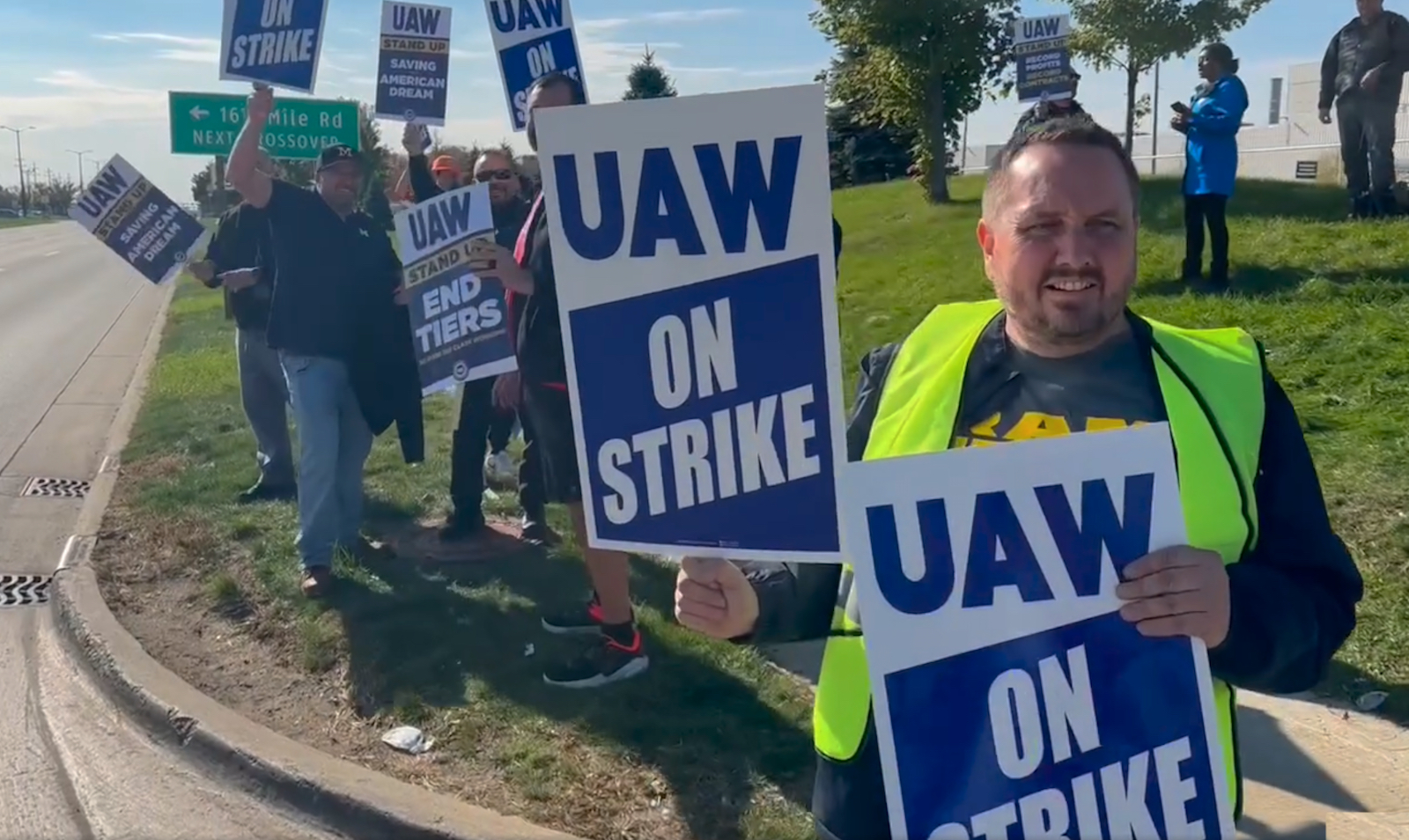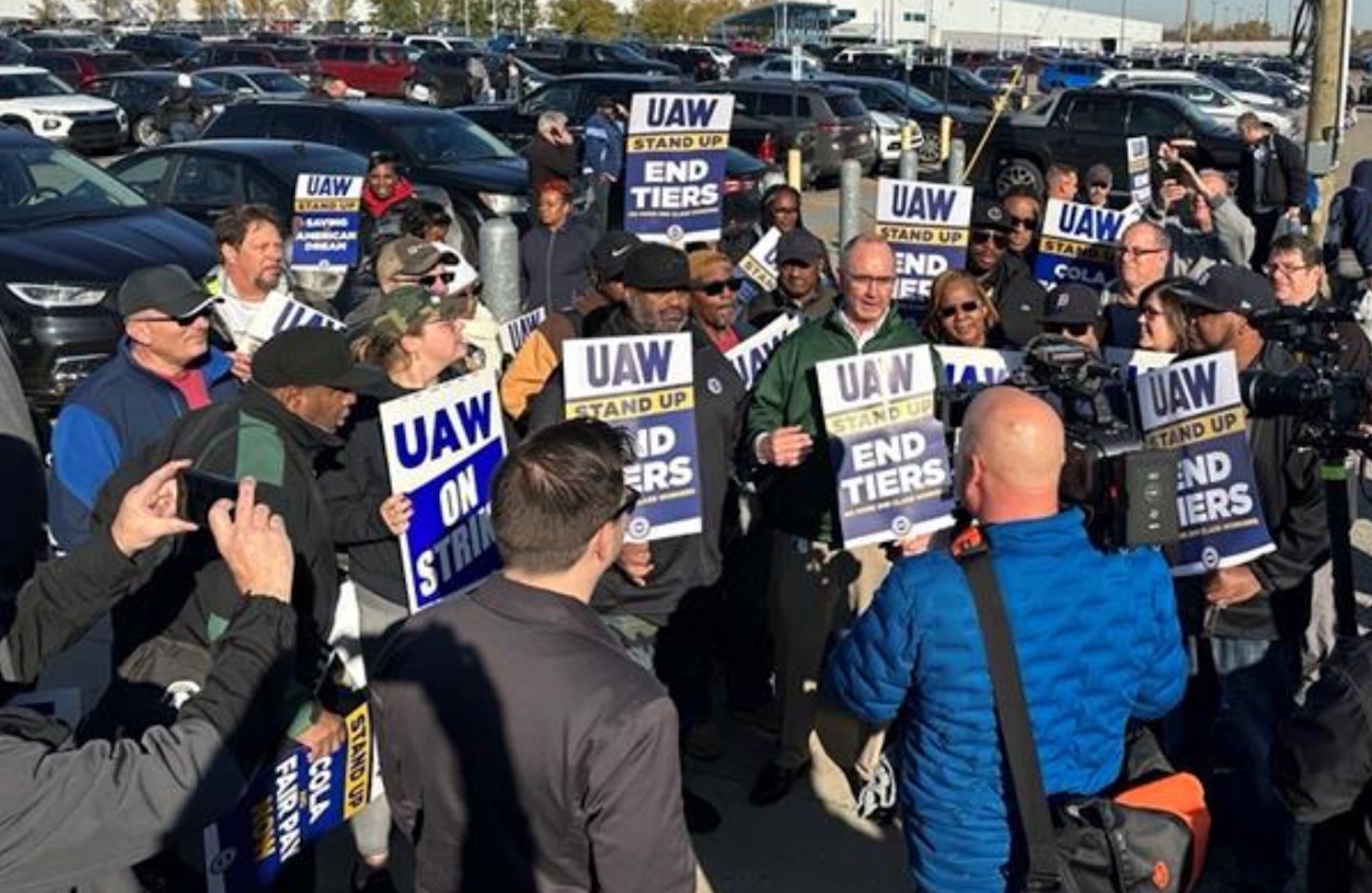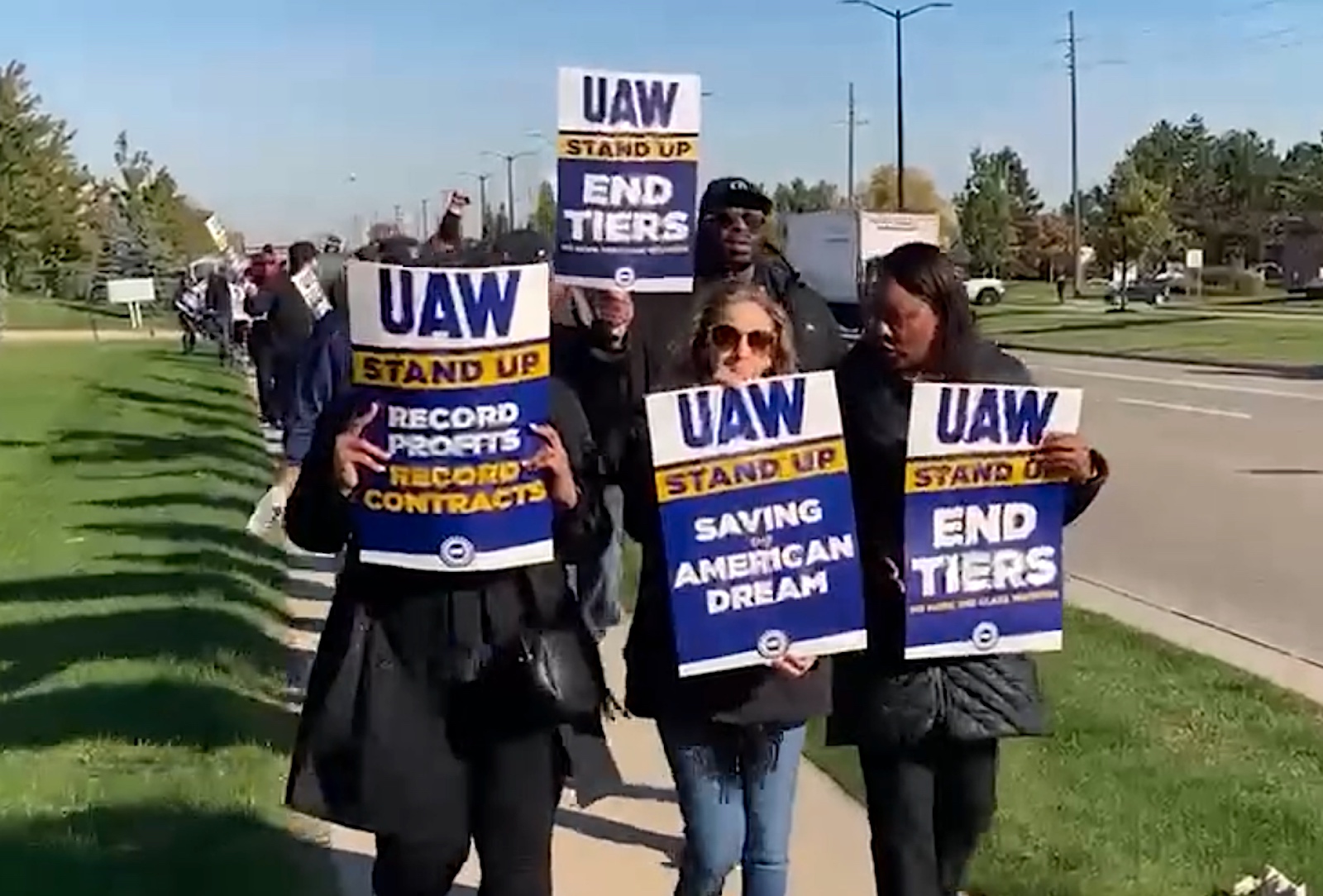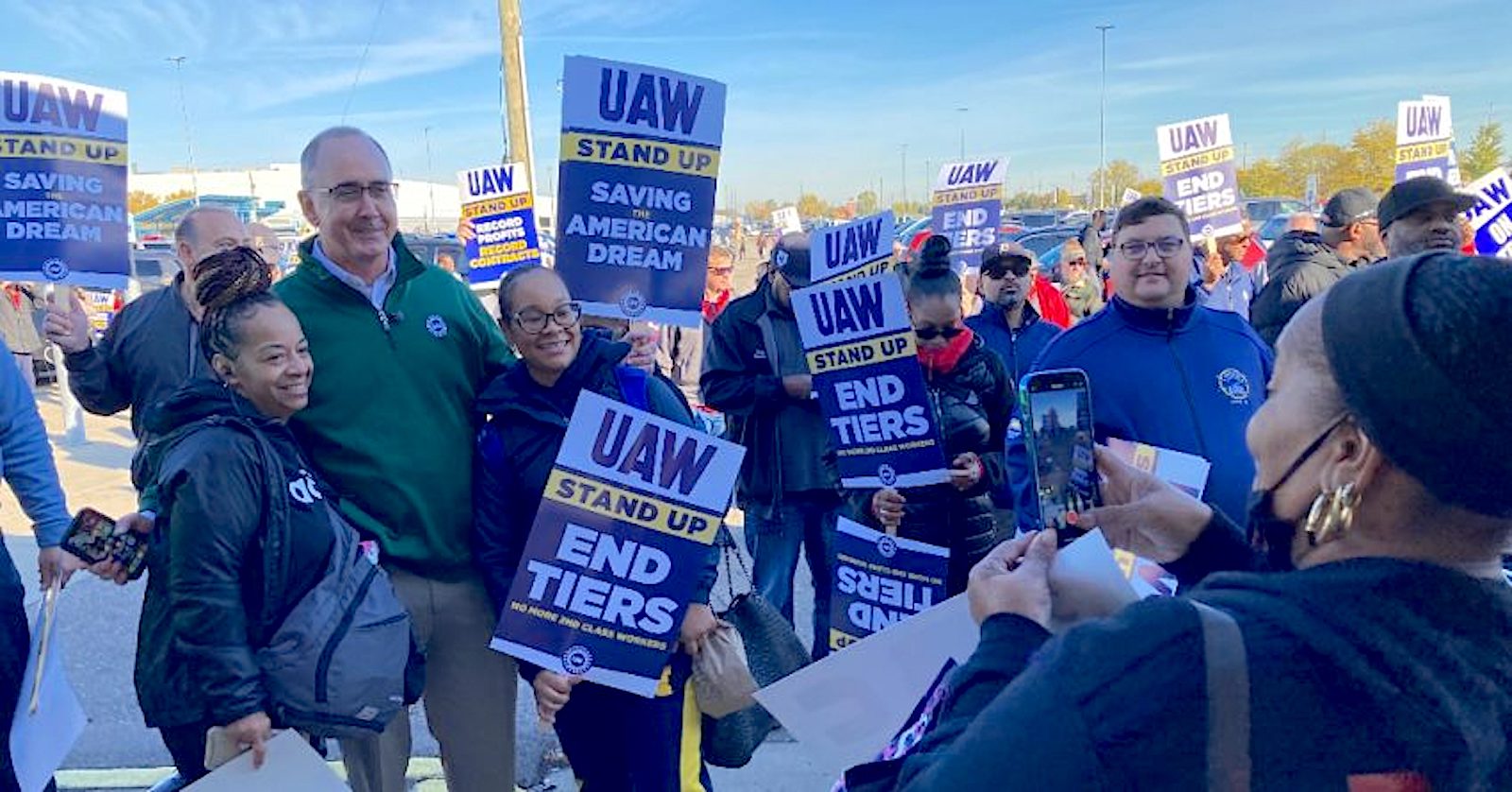With no major progress reported in contract talks with Detroit’s Big Three automakers, the UAW ordered nearly 7,000 workers to walk out at the most profitable plant operated by Stellantis, its Ram pickup line in the Detroit suburb of Sterling Heights.
In an unexpected move, the United Auto Workers Union directed 6,800 workers at the Stellantis plant in Sterling Heights, Michigan to “stand up” and walk out today, cutting production of the Ram 1500 pickup, the automaker’s most profitable product line.
The move comes as the UAW’s strike against Stellantis, General Motors and Ford stretches into its sixth week, with no clear end in sight. During a Facebook Live presentation last Friday, UAW President Shawn Fain outlined the latest offers from Detroit’s Big Three, indicating progress in several key areas, while also expressing frustration at the “greed” of the manufacturers in not going further to meet workers’ demands.
The “biggest profits…(and) the worst proposal”
Fain indicated that Stellantis lagged the offers made by Ford in GM in a number of key areas. And that was underscored by the statement the union issued Monday as it ordered workers at the Ram 1500 plant to join the novel “stand-up” strike the UAW has resorted to this year — and which has now resulted in the closure of more than 40 Detroit Big Three facilities across the U.S.
“Currently, Stellantis has the worst proposal on the table regarding wage progression, temporary worker pay and conversion to full-time, cost-of-living adjustments (COLA), and more,” the UAW statement explained, while adding that Stellantis has the “highest revenue, the highest (global) profits, the highest profit margins and the most cash in reserve.”
The strike began at 11:59 p.m. on Sept. 14, following an unusual approach to bargain ordered by Fain. Each of the three automakers has to come up with its own contract. Normally, the UAW starts bargaining in July and then shifts to a “strike target” in the final weeks before the deadline. Once a settlement is reached it’s used as a pattern for contracts with the remaining two carmakers.
Hitting the automakers where it hurts most
This time, the union went to the wire bargaining with all three simultaneously. Failing to reach terms it then ordered a first-time limited, or stand-up, strike targeting one plant for each of the automakers. In the weeks since, Fain has ordered additional plants hit, including 38 parts depots operated by GM and Stellantis, as well as the big F-Series plant in Louisville, Kentucky. That factory generates about $25 billion in revenue annually.
Last Friday, Fain faulted all three carmakers but appeared to lay out threats specifically focusing on GM and Stellantis.
As with Ford, the Euro-American Stellantis generates a disproportionate share of its North American revenues from full-size trucks. That means the impact of the walkout in Sterling Heights could be felt quite quickly, according to industry observers.
Is time really on the union’s side
It was generally expected that the UAW would expand its targeted strikes if new contracts weren’t announced this week. In his comments last Friday, Fain declared that, “Time is on our side, the American public is on our side, and the facts are on our side.”
But there are growing signs that time may not be working in the union’s favor. Workers who’ve been out on the picket lines have been indicating a growing frustration, especially in light of the colder weather that’s begun moving into the Midwest where many of the targeted plants are located.
Fain attempted to shore up support during his roughly 20-minute Facebook Live presentation last Friday, repeatedly praising strikers as “brave” and “courageous,” and calling on workers to maintain “solidarity.”
A settlement at General Dynamics
He warned the UAW rank-and-file that manufacturers would play off their “fear” by letting the walkout drag on and by raising concerns about possible job cuts and plant closures. Ford, for one, has warned that it may not follow up on plans to build a new EV battery plant in Marshall, Michigan due to the likely increase in labor costs from a new contract.
While the strike against the Detroit Big Three has generated most of the headlines, the UAW is involved in a number of different labor disputes. Workers walked off the job earlier this month after rejecting a tentative agreement with Mack Truck. But the union announced Monday that it had reached a settlement averting a strike at General Dynamics where workers make tanks and other military vehicles.
The union also has workers on picket duty in Detroit where it has struck the city’s three casinos, as well as Blue Cross/Blue Shield of Michigan.
But the strike against the Detroit automakers is by far the UAW’s biggest challenge. The manufacturers have tried to say they’ve reached their limits but Fain and his negotiators are convinced there’s more that can be won before reaching a settlement.






0 Comments